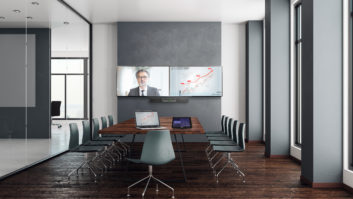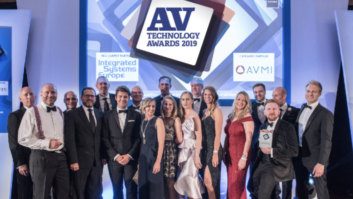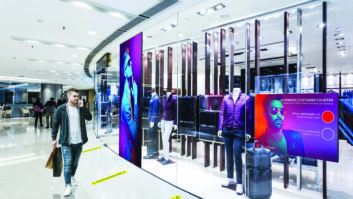Digital transformation in the workplace has become a major buzzword of late, but in reality it has been happening for around 20-years, ever since email started to replace written documents as the main means of communication. \
However, digitisation today has started to have a real visible impact on the way people want to work, and their technology preferences. For example, the use of smartphones in addition to laptops and traditional office programs has created a more complex ecosystem of digital tools and digital sources of information.

In this continuously evolving landscape, it’s even more important that workspaces are designed to facilitate collaboration. As teams become ever-more virtual, the right AV equipment can make collaborative working easier and remove any disconnect caused by digitisation, creating a new element of social interaction.
Information sharing is key to collaboration.
If workspaces are overhauled without a clear view of how any new technologies will benefit the end user, then businesses won’t achieve anything
Making sure that colleagues are able to share information and ideas easily is absolutely crucial. Especially when team members aren’t in the same room, or even the same country. Clearly technology has a key role to play here, but are businesses implementing solutions that support the day-to-day needs of end users?
Recent research from Sharp shows that more than three out of every five UK workers (64 per cent) feel they would be more productive if their office had better technology, saying that up-to-date tech would allow them to do better work with more people.
A staggering 45 per cent of people think that the technology in their office actually makes it more difficult to share information. Results also suggest that employees are slow to embrace collaborative technology, with over half of executives (57 per cent) explaining it is because they ‘don’t understand it’.
This highlights why usability should be at the front and centre when any AV solution is designed, purchased or implemented. If workspaces are overhauled without a clear view of how any new technologies will benefit the end user, then businesses won’t achieve anything.
Evidently something about the technology we use in the modern workplace is hampering collaboration. But is the technology at fault or are there other factors at play?
Anti-collaborative habits undermine cooperation
Research also revealed that anti-collaborative habits were common, with 41 per cent of office workers experiencing colleagues regularly talking over others during meetings and one third
(36 per cent) experiencing others typing or carrying on with their own work during a conference call or meeting.
“In this evolving landcsape, it’s even more important that workspaces are designed to faciliate collaboration”
Fifty per cent of people said that colleagues routinely ignore problems with communal office technology, while co-workers forgetting to share important information was a frustration shared by close to half (46 per cent) of those surveyed. Most of us will recognise these annoying behaviours as part of daily life, however, they can have an impact not only on a team’s productivity, but also its morale.
With more people working remotely, cooperative relationships are becoming both more important and more difficult. We need to make sure that the behaviours we exhibit and the technology we implement are designed to facilitate interaction and engagement as much as possible.
Making meeting spaces work for you
To increase collaboration, businesses do still need to invest in physical meeting spaces, to make sure that the time workers spend in them is as productive as possible.
“People must be able to concentrate on what they’re doing rather than being distracted by the technology”
Having network-enabled interactive displays in a meeting or conference room can make a real difference. It means that people can work together on one screen that can be used by everyone. This helps to create an ‘Eyes Up’ meeting where everyone can interact with one another. Lots of companies are creating informal spaces where staff and employees can meet, discuss ideas and work through projects. Compact, easy-to-move digital displays can be a key component of these huddle spaces. By having the interactive display connected to your company network, you not only support digital teams by making video conferencing easier, it also makes collaboration easier as you can seamlessly capture and share information.
During meetings, people must be able to concentrate on what they’re doing rather than be distracted by the technology, so solutions need to be easy to use and easy to integrate with existing networks and products. If technology is also implemented alongside the right training and support, it allows end users to get the most from workplace solutions.
Across Europe, there is a demand for meetings to be more engaging, more inclusive and more productive. As long as technology is made accessible and embedded properly into the working environment there’s no doubt it can hugely improve the user experience.







